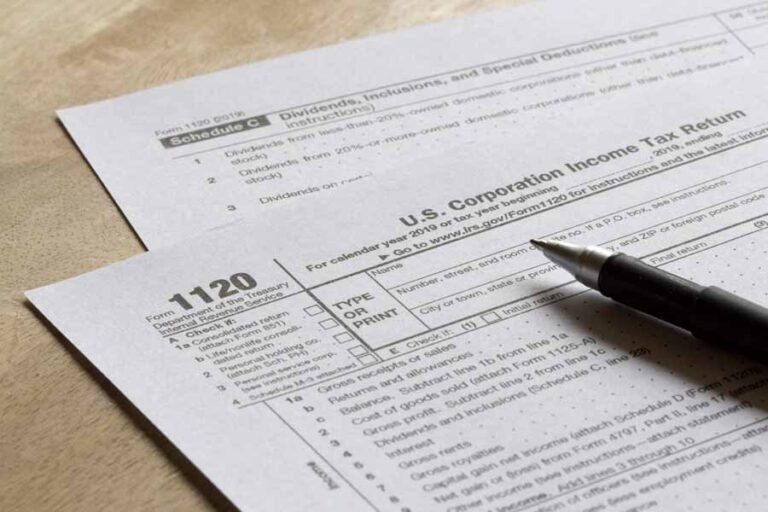All domestic C corporations (C-corps) are required to file IRS Form 1120, the US Corporation Income Tax Return, annually, regardless of whether they have taxable income or not. While the financial information required on Form 1120 is relatively straightforward when you have your balance sheet and profit and loss statement prepared, the detailed questions asked on the form can be more challenging to navigate. In this article, we will walk you through how to fill out the financial information requested using sample financial statements, provide tips on answering the detailed questions, and offer suggestions for finding more information on completing the form.
To make changes to a previously filed Form 1120, you will need to file an amended return using Form 1120X. Our guide on how to amend a corporate tax return can help you with this process.
Example Financial Statements
Sample P&L Statement
Sample Balance Sheet
Step 1: Collect the Supporting Information
Before completing Form 1120, you will need to gather the following information:
– Details about your corporation, including its name, date of incorporation, EIN, and mailing address.
– Tax year information, whether you are filing on a calendar year or fiscal year.
– Business activity description, main product or service offered, and business activity code.
– Accounting method used by the corporation.
– Financial reports such as P&L statements, balance sheets, fixed asset purchases reports, payroll expense reports, capital accounts, loans, and Forms 1099.
Step 2: Complete the General Information Section
In the general information section of Form 1120, you will need to provide details such as the date of formation, EIN, and total assets of the corporation.
Step 3: Fill Out Income & Deductions Section
Report the corporation’s income and deductions on the first page of Form 1120, including gross receipts, COGS, interest, rent, royalties, capital gains, depreciation, bonus depreciation, section 179 expense, and net operating losses.
Step 4: Complete Schedule C—Dividends, Inclusions & Special Deductions
If your corporation received dividends, interest, or other income from other corporations, you will need to complete Schedule C.
Step 5: Complete Schedule J—Part I & Part II
Schedule J is used to calculate the taxes owed by the corporation and report any payments or refundable credits.
Step 6: Complete Schedule K—Other Information
Schedule K gathers additional information about the corporation’s accounting method, ownership, related entities, distributions, and other relevant details.
Step 7: Complete Schedule L—Balance Sheets per Books
Schedule L is used to report the corporation’s balance sheet information.
Step 8: Complete Schedule M-1—Reconciliation of Income (Loss) per Books With Income per Return
Schedule M-1 reconciles the net income on the P&L statement with the taxable income reported on Form 1120.
Step 9: Complete Schedule M-2—Analysis of Unappropriated Retained Earnings per Books
Schedule M-2 analyzes the unappropriated retained earnings per books of the corporation.
Assemble Form 1120
Arrange all forms and schedules according to the Attachment Sequence No. and include any necessary attachments labeled with the corporation’s name and EIN.
Before filing Form 1120, confirm that all required attachments are included, resolve any flagged issues from tax software diagnostics, and ensure that Schedule M-2 balances with Schedule L and Schedule M-1.
In conclusion, Form 1120 is a crucial document for C corporations to report their income, deductions, and tax liability to the IRS. By following the steps outlined in this article and providing accurate and detailed information, you can ensure compliance with tax regulations and minimize the risk of errors or rejections by the IRS.

